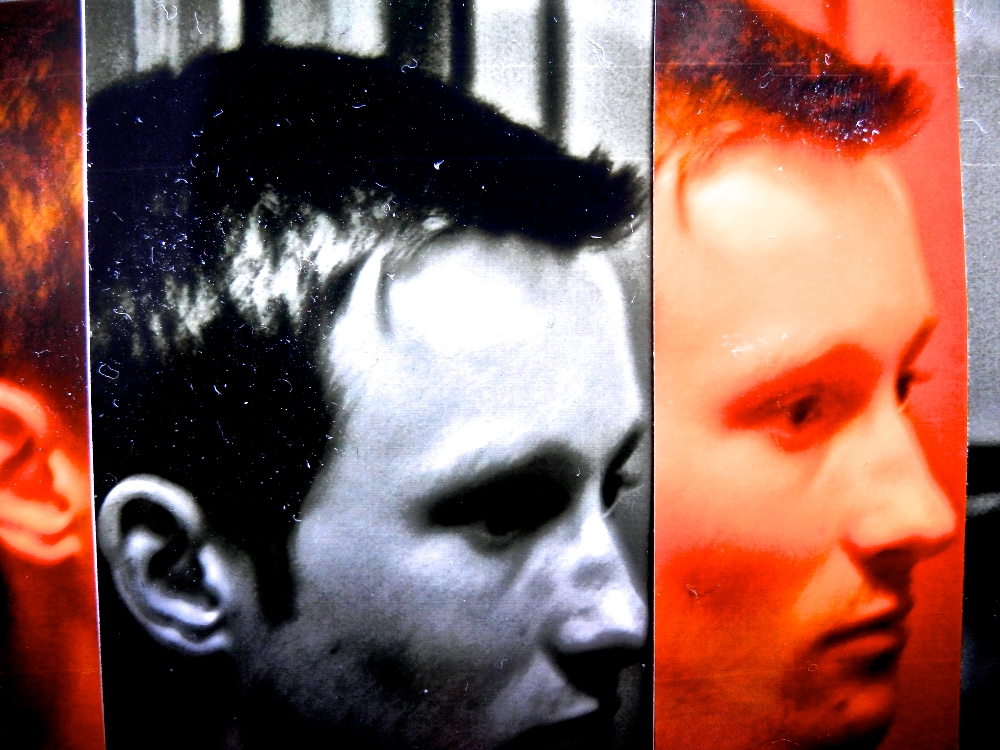The following short play is a response to the interview of Edith Scob by Raimundas Malasauskas, Valentina Desideri, Mark Geffriaud and Géraldine Longueville on Monday, March 18th 2013. The interview was conducted on the occasion of the release of Holy Motors (dir. Leos Carax, 2012) and will be published in Discipline, Issue 4, Melbourne, 2014. Both the interview and the play are part of oO, The Lithuania / Cyprus Pavilion in 55th Venice Biennale.
Illustrated by Nina Kuttler.
Collinearity
A flash drama in one act.
Constantinos Taliotis
Characters:
Edit Scope
Ray
Location:
Somewhere, not far from nowhere
ACT 1
Scene 1.1
R: The strong effect of the film, for me, was that, even when it was over in the theater, it didn’t stop. I left the cinema, and the movie continued. There was no separation between film and non-film. That’s why I don’t even want to call it a film. It was beyond cinema.
ES: Yes. I understand, yes.
R: (continues his monologue) It appeared as an exiguous and caustic specter laying the cornerstone of a rumination in an overseas terrain. Overseas, yes, but a concurrent estate, of equal pro rata. It invaded like a glissando, precipitously and clement to hunt the abstruse scope of perception. With traitorous gait it ascended like a contagious epidemic, disseminating gently and nullifying the sensoria of the inevitability of an end, the capacity to distinguish limits, beginnings, lines or points. Shapes, volumes, textures, colours, stars and planets all became a unified singularity.
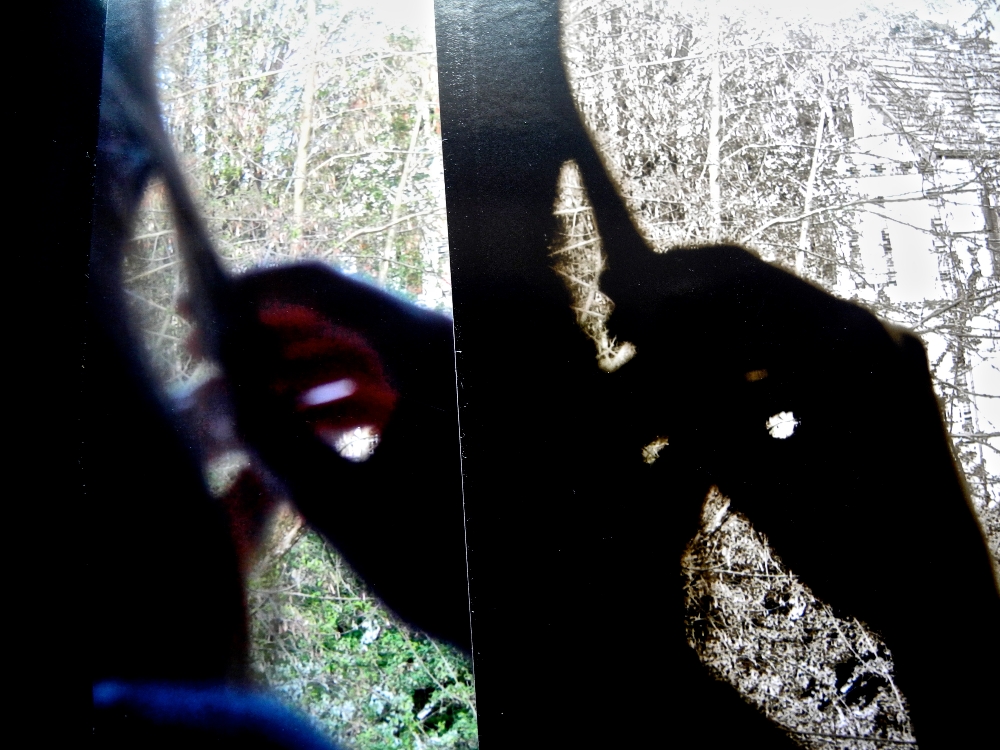
ES: Yes. I understand, yes.
R: (continues his monologue, indifferent to ES) Departure never occurred. The two terrains, the cinematic and the non-cinematic departed from their finite nature turning into an immense and immeasurable expanse. When I was entering, there was the cinematic and the non-cinematic and I slipped from the former to the latter. Now there was no separation. No longer, no more. I was in the overcinematic grounds. Do you understand? (the question is not addressed ES)
ES: Yes. I understand, yes.
R: (continues his monologue, indifferent to ES) It was like a malady, the type of which Cinerama, Ultra Panavision or Super Technirama would be jealous of, and the type that language can not accommodate and resents. Cannot even want to call. Not yet. No longer. (He hiccups. He turns to ES) Do you understand? I went to the cinema to watch a film. According to the ceremony code and the toll conditions once the film was over one had to leave the cinema. I did. The film was over, so I did. But the film did not stop. It was over in the theater but it continued. No, it did not continue on its own, it continued with me, we continued together. There was no caesura, no closure to this continuum. It was an infinite perpetual continuum. Everything became overcinematic. I was retreated by Buster Keaton’s Sherlock Jr. recomposing the story of the projectionist who wanted to be a detective and could only transcend to Sherlock’s pipe via the threshold of the projection. He was contaminated by the same virus. Once he leaned his head against the projection, he felt asleep and trans-rayed into the projected film. This concomitance led to a hypercinematic condition, identical to the one I was going through after I left the theater. It has been impossible to date, to unfathom whether the incompatibility lied on the side of Buster Keaton / Sherlock or on that of the film. The projectionist / detective, on the one hand, enters a universe possessing insufficient vocabulary to administer its glossary. He emerges as an impotent unit when it comes to corresponding with laws of spatial discontinuity. Concurrently, the film shifts into a sequence of erratic space alterations boasting its capacity to co-accommodate spatially and temporally discontinues landscapes. Whereas it starts as a film titled Hearts and Pearls, once Sherlock jumps into it, it juggles a number of post-narrative sets. (He talks faster) Starting from a garden with a marble bench it cuts to a street with passing cars and pedestrians, then converts to a mountainous landscape with cliffs before cutting to some kind of a cage or a jungle with lions. Sherlock is perplexed by the incomprehensibility of space unfolding since it coincides with none of his cognitive acquis of space. Before he can habituate to the new landscape it shifts once again to a desert with cactuses and a train passing by and as Sherlock sits on a sand dune the landscape mischievously cuts again to a rock in the sea and he finds himself attacked by waves. As he tries to dive into the sea he is taken to a snowy landscape finding himself in a ditch. The film withholds a final trick for the ambitious detective who trying to lean onto a tree the discontinuous sequence completes its circle by cutting back to the garden with the marble bench. Sherlock is in despair. He was dragged into a terrain, into a cosmos where the configuration of space and time is an unknown factor to him. It is inconsistent, irregular and inconceivable.
That is precisely where I was when I left the theater. In an indefinite disorientated state of epidemic, absolutely asymmetrical to the recognition of substance taxonomy and clarity where edges, lines and perimeters had been annihilated. I was not simply displaced from one circuit to the other via the enchanting dexterity of cinema for the duration of the movie and then reassigned back to the initial period. My fundamental a priori values of the formation of the spatiotemporal nexus have been assaulted and ferociously forced to collapse. There was no longer the film and the non-film. Everything was hypercinematic. I was in a cosmos, like Buster Keaton where the projection and the non-projection aggregated to an absolute singularity with absolutely no exteriority, no finitude and no horizon; no projector, no projection room and no projectionist. And this cosmos was me.
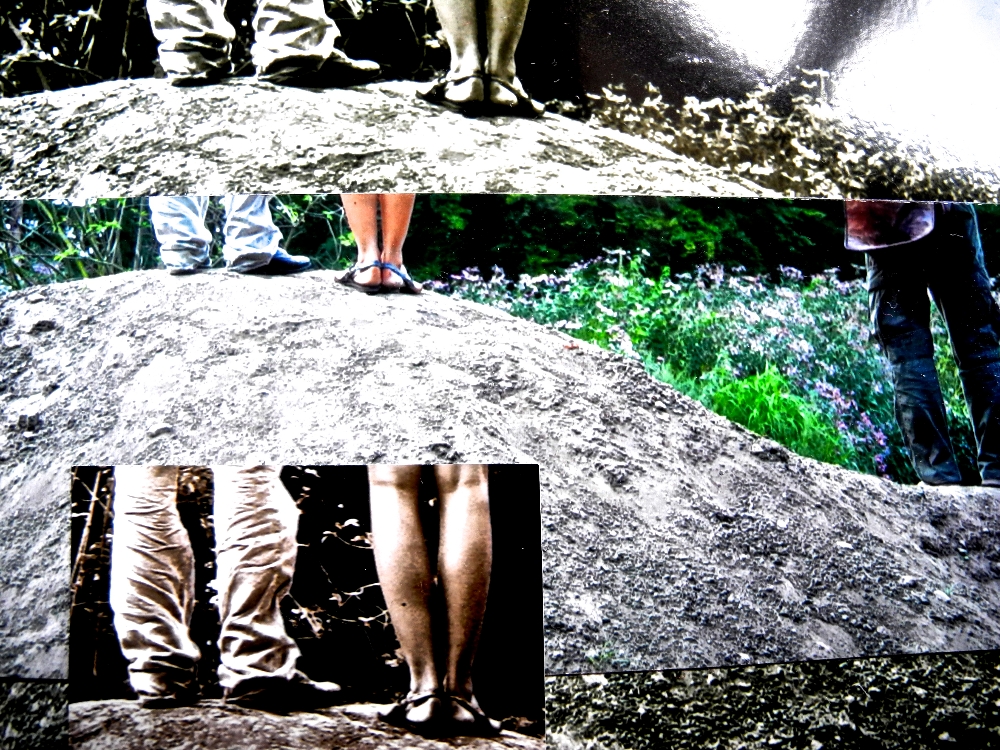
ES: What you are describing, this topographical disorientation and visual agnosia resembles symptoms of apeirophobia. You are describing a unidimensional vista with no altitude nor latitude. Apeirophobia is the apotheosis of the fear of the apocalypse. From all the manifestations of the anxiety of terminal extermination, the most acute one is the deficiency to comprehend any sense of terminality whatsoever. The ultimate fear of a coming end is the nullification of any perceivable ends, temporal or spatial.
R: Nor only couldn’t I accustom to the codes of operation of this unidimensional vista, as you call it, but moreover the boundaries between myself and it were cross-fading. In the same way that film and non-film were indivisible constituting an infinite continuum so was my physical mass diluting into this singularity. From one point of view the strong effect of the film was very generous. It did not address me directly but it seduced me like a whisper. “Come with me and I will make you part of me, a piece of celluloid, perhaps even a whole hypercinematic frame.” The hypercinematic condition was a solipsism syndrome itself. Nothing existed outside of it. Nor did I; I was depersonalized, cut adrift. The screen was the brain and I was turning into a neuron frame. I was becoming film myself. And the film continued. We continued together. Beyond cinema.
ES: Would it surprise you to be told, that the Atomic Theory is at work in this parish? It is doing untold destructions.
R: It would indeed.
ES: It’s worst than the smallpox. According to Sergeant Pluck in Flann O’Brien’s The Third policeman “everything is composed of small particles of itself and they are flying around in concentric circles and arcs and segments and innumerable other geometric figures but spinning away and darting hither and thither and back, all the time on the go. These diminutive gentlemen are called atoms (…) [and] they are lively as twenty leprechauns doing a jig on top of a tombstone”. Based on this theorem, Sergeant Pluck infers that people who spend most of their lives riding bicycles get their personalities mixed up with the personalities of their bicycles. Since atoms of any substance or figure are in constant motion, the perpetual friction of a man’s atoms with those of a bicycles’ leads to the interchangeability of each one’s atoms, turning men into bicycles and vice versa. The postman for example, who has spent forty years, day in day out, cycling thirty-eight miles each day, is seventy-one per cent bicycle, whereas his bicycle has seventy-one per cent content of humanity. That led to peculiar behaviors like men leaning against walls or falling when walking too slowly.
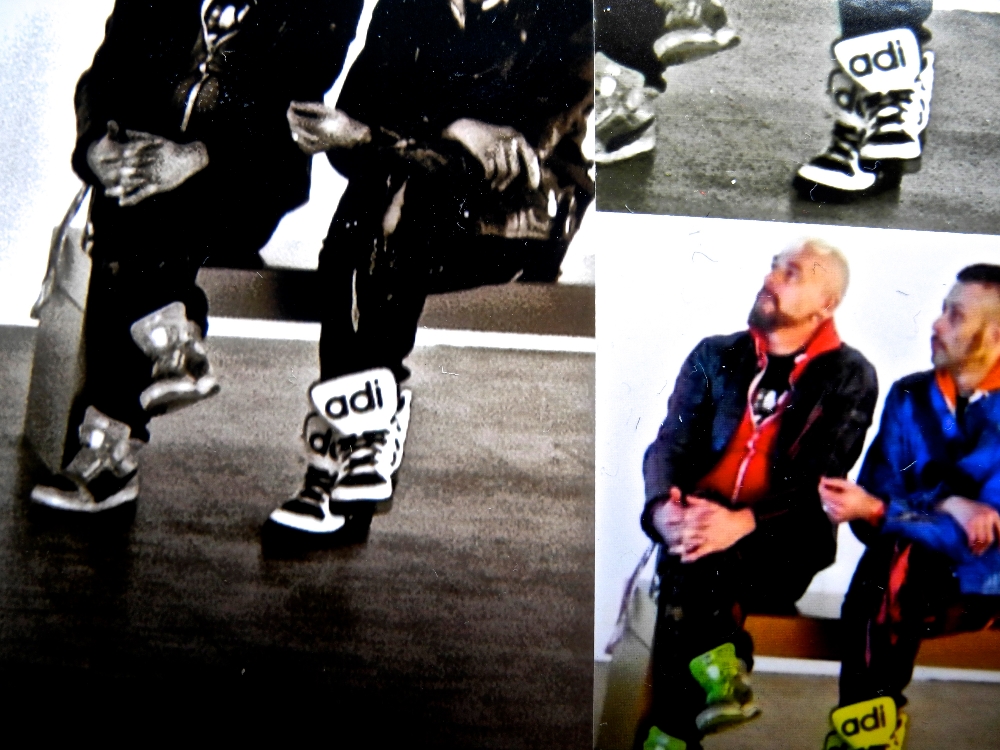
R: So what you are saying is that I have a high content of film in me?
ES: Exactly. These discontinued perception of time and space with perpetual topographic and temporal disorientation and difficulties to negotiate the distinctions of what is film and what is not are the early symptoms. It can get worst. There are case studies of people who get hiccups if they don’t move at a constant speed of twenty-four frames per second, or others who start speaking with voice over and turn black and white when they talk about the past. More serious occasions have also been reported of contaminated patients developing peculiar scars on their bodies that resemble film perforations and keykodes and in a few occasions some were taken to custody for sleeping with sprockets.
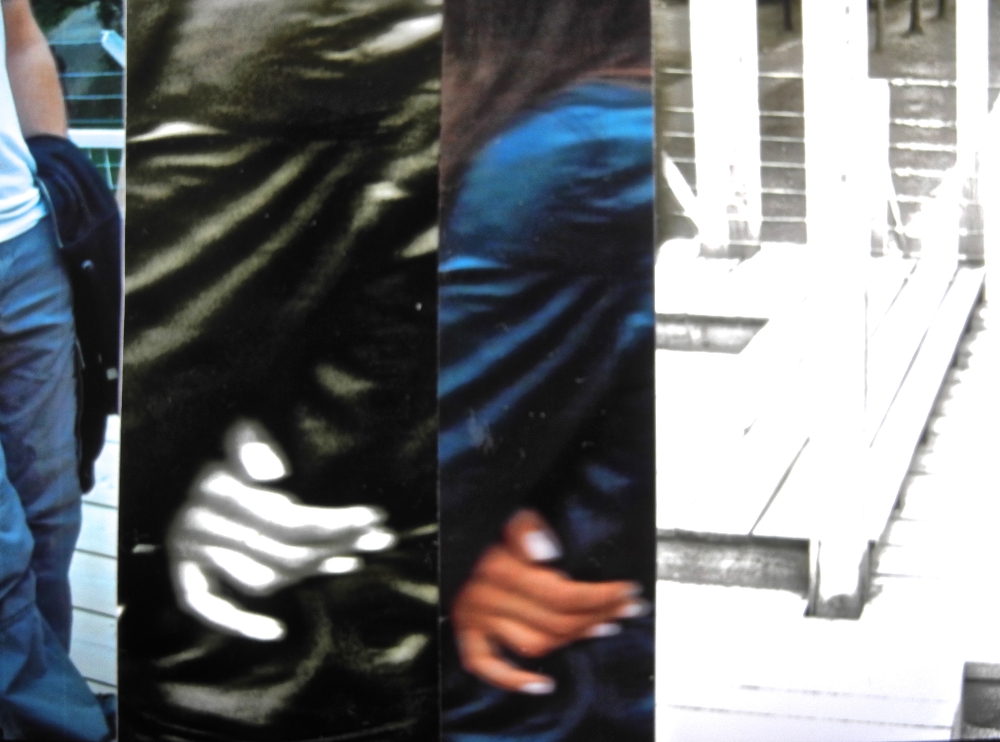
R: The Atomic Theory, as you describe it though, is the outcome of a quantitative accumulation of high dose of filmness. After an extensive exposure to film, man is susceptible to changing to film and vice versa. It corresponds to a metric system where each film and each viewer consist of equal quantum of atom particles moving in unfluctuating speed and persistent degree of interchangeability, accruing analogous to the magnitude of the friction. Which is to say that the only reason that the symptoms of the Atomic Theory emerged with this particular film is because the friction of my human atoms with those of film have reached an optimum point. The pleroma of time had arrived, so to speak, and regardless to which film I had been exposed to, the same symptoms would have emerged.
ES: That is only partly true. There is however a lot more variables than a regulated convergence between a human and an object or a geometric figure, or in this case film. It is indeed apropos to deduce that the linear passage of time leads to the inevitable increase of friction between masses, ensuing subsequently cross-pollination. Such a deduction though is also inaccurate. The passage of time generates multiple intersections amongst innumerable masses that occur at variable velocities, making the registration of the origin of each atom in a certain mass at any given point in time a complex matter. If, for example, we take the case study of the postman, one will also have to measure the level of friction between the postman and the envelopes, the bicycle tires and the asphalt or the unpredictable weather conditions and the postman’s bag, just to mention a few, (and additionally the nexus, constellation and intersections of all the parties at work). Taking under consideration that the atoms are spinning away and darting hither and thither and back, all the time on the go and at no moment are they static, any speculation regarding the composition and the identity of an object or a geometric figure is bound to change within infinitesimal time. An everlasting deterrritorialization is in progress ad infinitum.
In many of these occasions the passage of time remains unaffected and is considered to be a constant. The immutability of time has of course been greatly challenged. There are various testimonies of monks in Mt. Athos transforming their cells to black holes to examine the causalities to the adjoining cells given also the gravitational time dilation. A lot of cells have been reported to go missing, and so did at least three monks while constructing the black holes. There are also unofficial accounts of monasteries blooming within black holes, especially when the holes were located in monasteries with high content of monasteryness, but no beholder has formally avowed before God the existence of such monasteries apart from a hagiographer. His testimony was declared unreliable after he was arrested digging burrows with a gang of groundhogs. He was imprisoned then escaped by opening a tunnel out of his cell and has not been seen since. He is believed to be in hibernation.

R: Yes. I understand, yes. (He hiccups)
ES: But let’s go back to cinema, and the complexity of Atomic Theory when manifold components are being in simultaneous friction, trying to trace their purest composition. There is this story from the dawn of cinema, when human beings were still uncontaminated by filmness, of the screening of L’arrivee d’un train en gare de La Ciotat in 1896. At that point very little intersection had been reported between cinema and people. Some projectionists were suffering from mild symptoms of film contamination, but the disease was still at very early stages. The audience that attended the screening was unaware of the codes of cinema, more generally speaking of the constitution of moving image and particularly of its behavior within cinema theaters. It is therefore no surprise that when exposed to the scene of a train approaching the foreground of the projected image they were overwhelmed. Contemporary reports talked about the film “having a particularly lasting impact, causing fear, terror, even panic”. Film and moving image were an unknown entity, a mass composed of unforeseen atoms which explains why, not only was the architecture of its image inconceivable, but was also received with great suspicion. Moreover the spatial characteristics of the cinema theater as a locus of projected moving images was yet another terra incognita. Audience, film and cinema theater were going through their early stages of cohabitation, when each one of them had not been contaminated yet by any of the others leaving demarcations relatively rigid. And suspicion unequivocal.
If we take another example from 2012 we can comprehend the expansive policy of film and the contamination of humans by filmness. Survivors from the mass shooting that occurred in a movie theater during a screening of The Dark Knight Rises in Colorado, on July 20, 2012, reported that they thought the sounds of gunfire and screams were part of an extended field of the film. The initial fear, panic and incredulity of the screen in 1896 have not only vanished completely by 2012, but the projected moving image on the screen has extended its filmness to the movie theater and the audience constructing an amalgamation that perception is incompetent to distinguish film from non-film. Not only what happens on the screen is comprehended as film, but also what happens in the movie theater. The film particles of the screen that have been met with great mistrust in 1896 have by now disseminated to their adjacent masses modulating the composition of the movie theater and that of the audience. There is, therefore, no reason why this expansion of filmness, will not dispread even outside the movie theater, after the film, beyond cinema.
Now the film that you watched that night had exceeded its filmic authority beyond the space of the screen, expanded to the theatre and even manipulated a post cinematic effect outside the theater. Its content of filmness has been reported as dangerously high, and given your vulnerability due to a long exposure to film diachronically, it contaminated your percentage of human atoms to such an extent that it continued even when you left the cinema. This film generates a prolonged suspension of disbelief and concurrently undermines the suspension of disbelief as a fundamental. It is suspension of disbelief suspended, in time and space. That means that the content of its filmness is substantially higher than a number of other films. There are variations at the levels of filmness found in each film. In the danger of excessive filmness spread in towns, restaurants and hotel foyers, various parafilmic organizations have been formed that produce under-filmness films to be used as antitodes for those who suffer from long-term film nausea, but they never managed to get the popularity they expected. So you can see it is not only a question of quantitative accumulation of filmness, but a lot more other perplexed formulae are undergoing in this manifestation of the Atomic Theory.
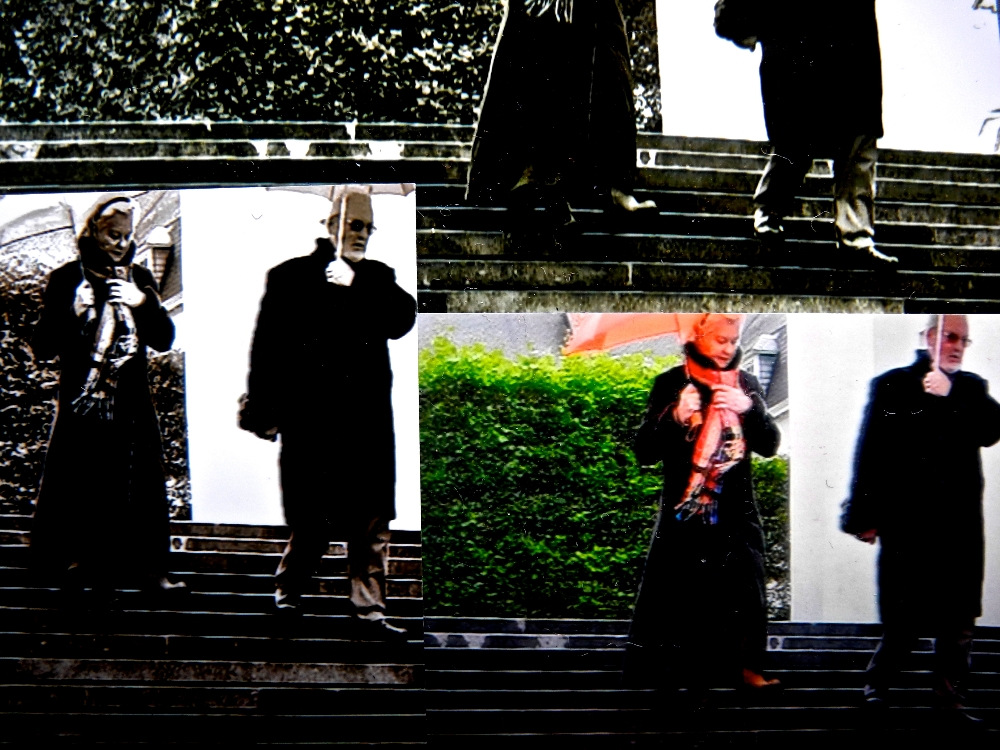
R: It wouldn’t be far fetched therefore to infer that there are films with high percent of human or movie theatre atoms.
ES: Naturally. In this crazy playground infested by innumerable, restless and imbalanced atoms, equipped with bayonets and thirsty for perpetual penetration from district to district, everlasting assembling and disassembling of gangs, the frontiers in between rigid substances have long vanished. It is highly improbable to detect unadulterated film atoms any more since cinema had engaged in numerous combats, singed infinite treaties, endured severe alienations and expropriations, kept many hostages and lost almost as many atoms to other conquerors. Even in this state of dilution and deformation, with apparent lesions from their encounters with atoms from other entities, cinema atoms persist impetuously in their polemic tactics with the contiguous categories, sometimes in victory, others in disaster. The corruption or erosion that a film’s filmness undergoes is calculated by its quantity and density in filmness against the quantity and density of the atoms of each and every matter surrounding it, whether that is rigid or permissive. For example, following extensive and detailed speculation of atom traffic between film and architecture, it has generally been observed that the density of architecture atoms in buildings (their architectureness) is higher than the filmness of films, on the one hand, but on the other, is considered inferior in offensive strategies, deception, decoy and guerilla tactics due to idleness. In other words, even though architecture is usually rigid in density (defense), when encountered by films it is forced to surrender to the latter’s seductive dynasty (attack). In various and relatively diverse buildings’ autobiographies or notes from their psychoanalytic therapy sessions, many buildings admitted having dreamt, being traumatized or haunted by the image of themselves imploding through the eyes of a film camera. Amongst architects this is known as the “Pruitt-Igoe Syndrome”, dedicated to the notable images of Minoru Yamasaki’s housing project’s demolition in St. Louis, Missouri. Many tried to redefine the syndrome under the light of the high media (especially moving image) exposure the collapse of the World Trade Centre – another Yamasaki building – has been through in September 2001, but the only point of agreement amongst those in the opposing parties is that Yamasaki’s buildings, in general, have a high intrinsic per cent of collapseness.
As for the aforementioned film that led you to redefine the frontiers between the cinematic and non-cinematic, not only does it have a high density of filmness and resists vigorously any presumptive suitors surrounding it, defying contamination to a great extent, but moreover its filmic atoms maneuvered and mastered methods of expansion. Its filmic entity comprises of a solid army combining atoms of antiaircraft artillery with unforeseen film bases for raids and incursions disarming the entities adjacent to it. That is precisely what happened to you; you were disarmed from your a priori knowledge and felt that all the classifications that formulated your understanding of the world surrounding you have been razed. The transmutability of the film, its perpetual camouflage – resembling a chameleon – its continuous detours and enchantments, exercise a seductive authority over the audience – and other adjacent entities – at unforeseen levels. It is no coincidence that this motion and transmutability is simulated and carried out by a vehicle, which appears as the hub that propels the various disguises, ostensibly unaffected itself, before it surrenders as well and is cinematically anthropomorphized.
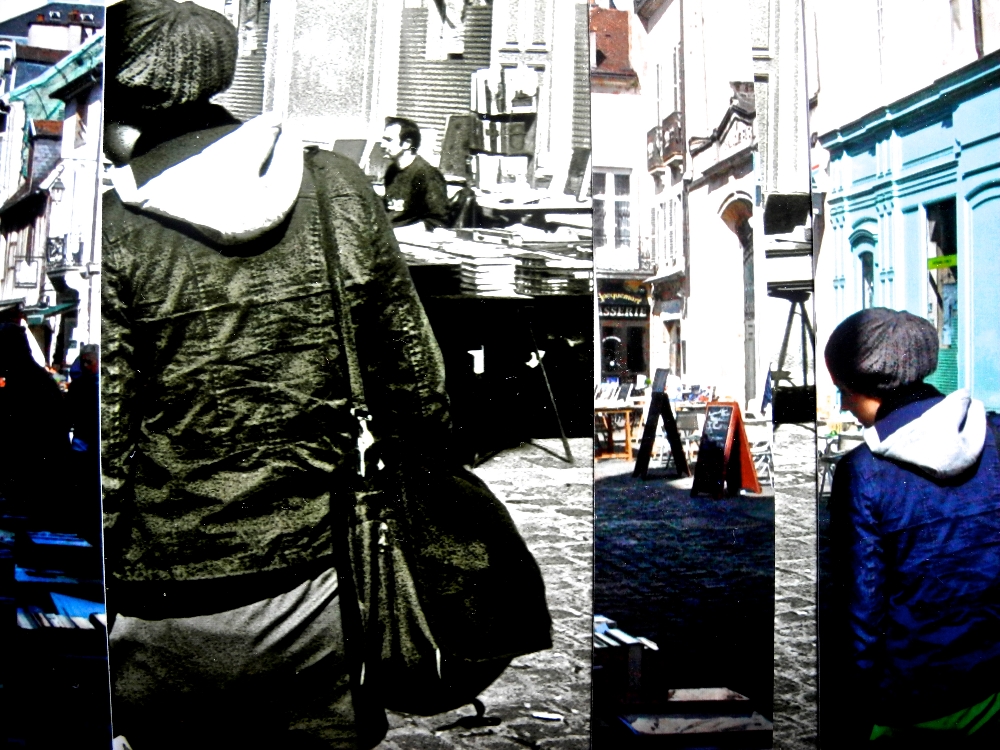
R: This is cinema after all. An entity that absorbs you like a sponge and attacks you like an urchin.
ES: This is what cinema should be, after all, spreading like mercury. Cinema is someone else, somewhere else.

